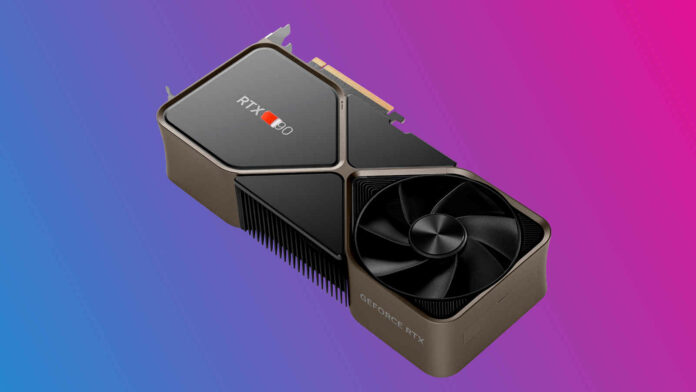Rumoured specs for the next-gen Nvidia GeForce RTX 5090 indicate a large separation from the next GPU in the stack. If hardware meets performance the way it looks on paper, it should leave RTX 5080 in the dust, especially as the VRAM capacity remains unchanged.
According to @kopite7kimi on X, Nvidia’s Blackwell-based GeForce RTX 5090 and RTX 5080 will have a wide gap between them. The flagship could deliver up to double the latter’s performance while consuming up to 600W. Though the exact reason for such spacing is unknown, Team Green may be leaving room for Ti and Ti Super variants of the RTX 5080.
As a reminder, RTX 4090 carries 16,384 CUDA cores inside the AD102 GPU, whereas RTX 4080 tops at 9,728 CUDA cores using the AD103 chip. In other words, RTX 4090 boasts 68% more cores than its little brother. In contrast, this alleged RTX 5090 is said to house 21,760 CUDA cores against 10,752 for the RTX 5080, which is a whopping 102% increase. To put it in context using the 40-Series, it’s like jumping from an RTX 4070 Ti/Ti Super to an RTX 4090.
Additionally, RTX 5090 is rumoured to pack 32GB of the new 28Gbps GDDR7 memory running on a 512-bit bus, the latter of which will require quality PCBs to deliver its 1,792GB/s of bandwidth. To power all of this, the card supposedly targets 600W, which explains earlier rumours hinting at dual 16-pin power connectors. Furthermore, its Founders Edition version is supposedly a dual-slot card. I wonder how Nvidia manages to cool this beast using such a compact cooler, unless it’s liquid-cooled.
RTX 5080, on the other hand, retains its 16GB of VRAM while upgrading to 28Gbps GDDR7. This means a 256-bit bus like its predecessor, netting a slightly higher 896GB/s bandwidth. Once more, the power target rises to 400W, fed through the 16-pin and Gen 5 PCIe interface. Blackwell architecture certainly looks quite power-hungry, assuming these specs are correct.
Both GPUs are expected to be announced this year, with a launch sometime in early 2025. With AMD and Intel seemingly uninterested in the high-end next generation, Nvidia will have carte blanche to do what it pleases regarding pricing. That said, those who can afford the new top dog will be delighted with its outstanding performance.
